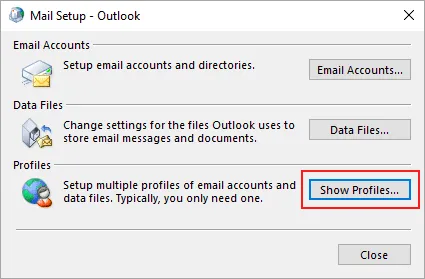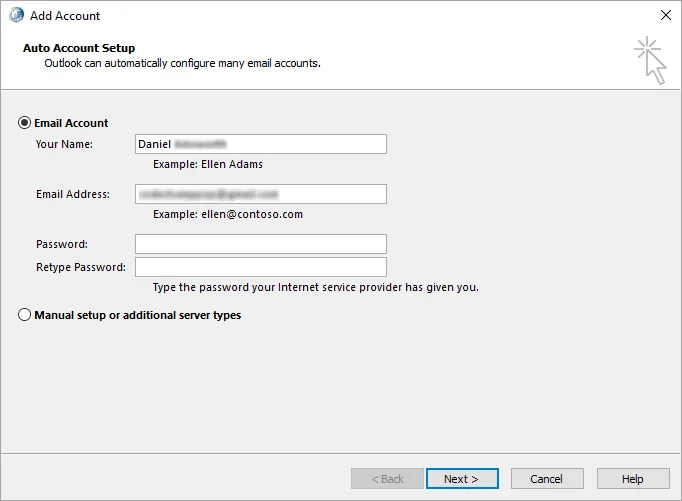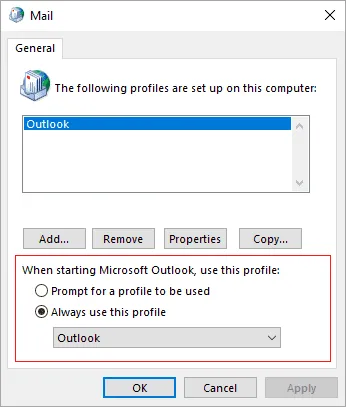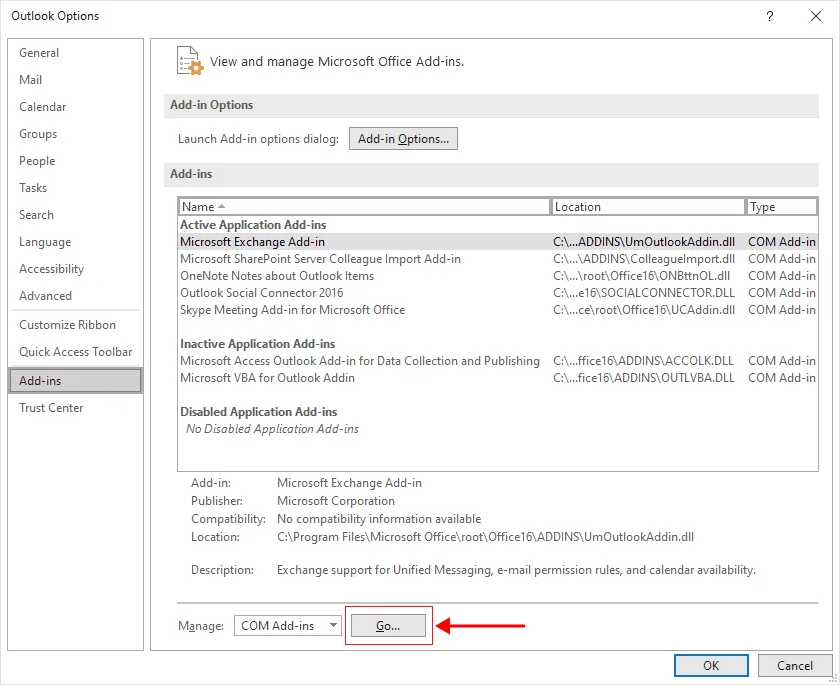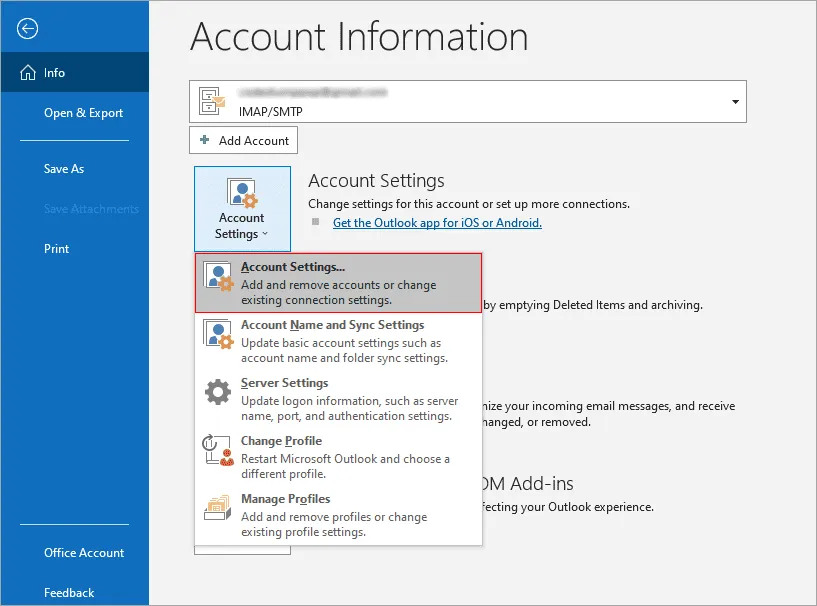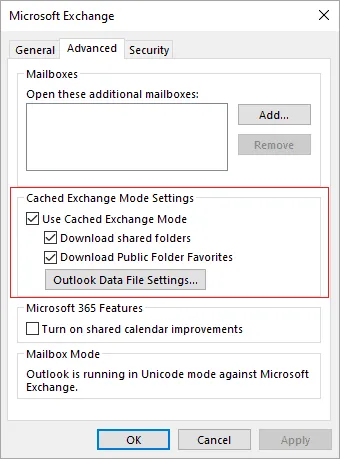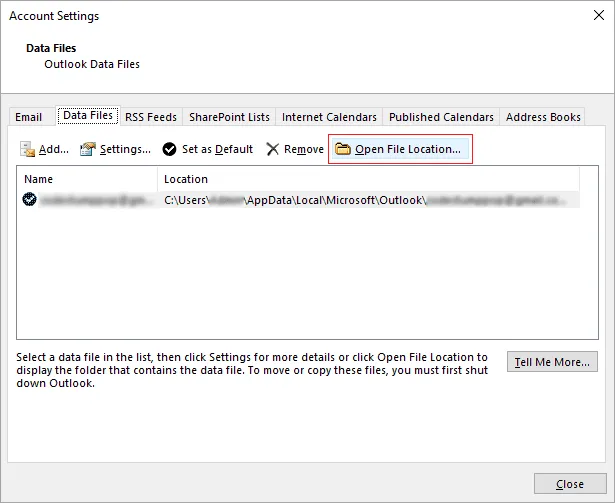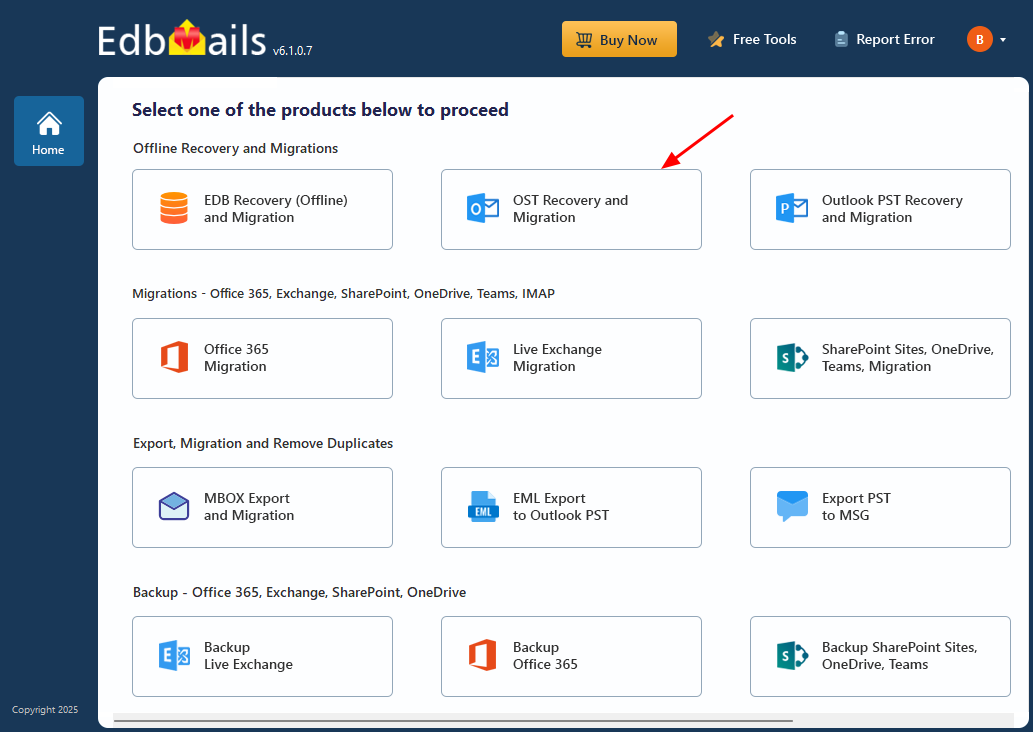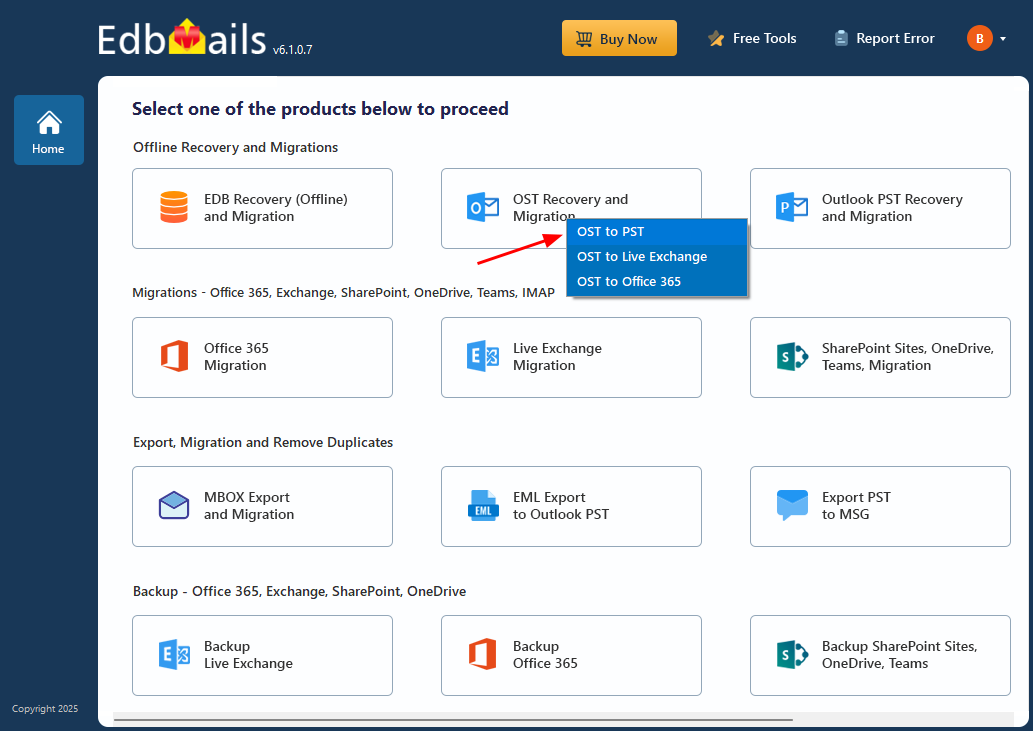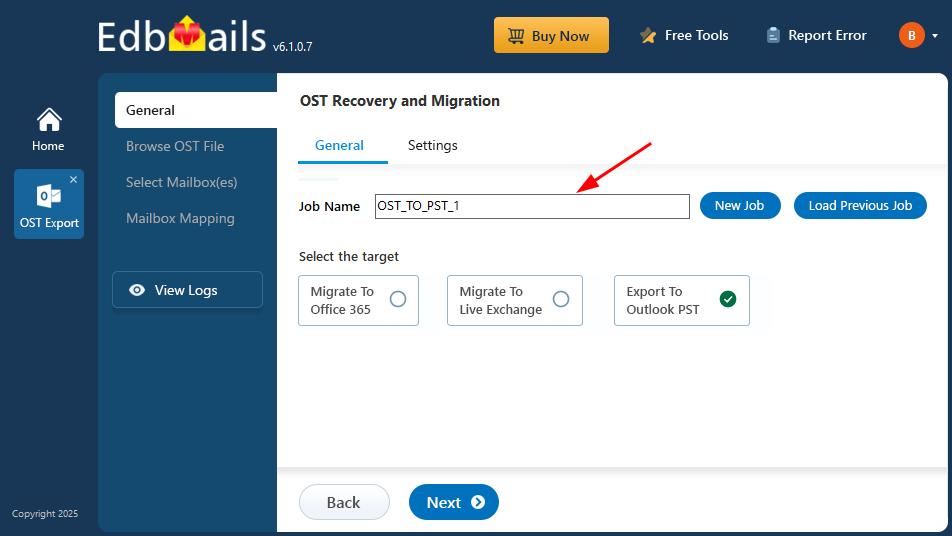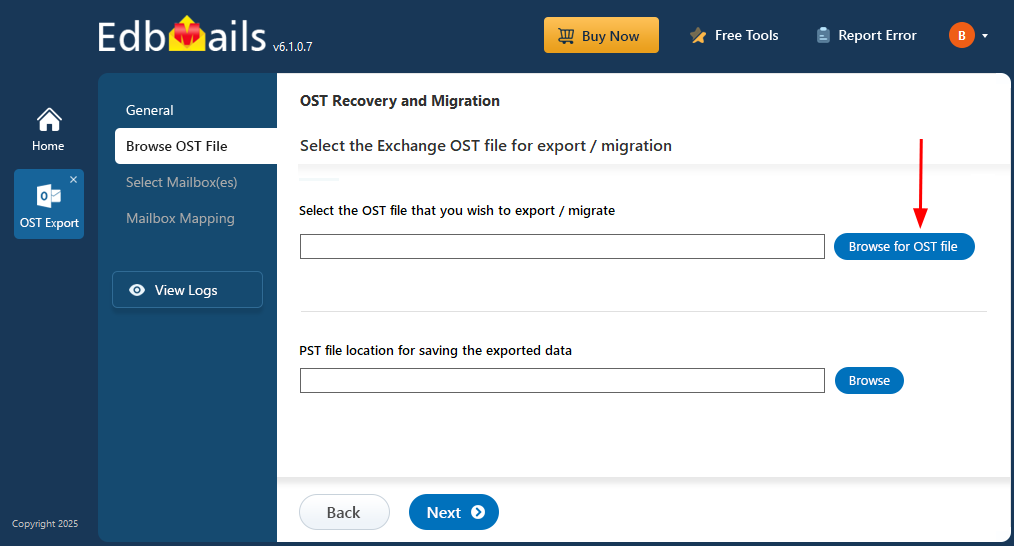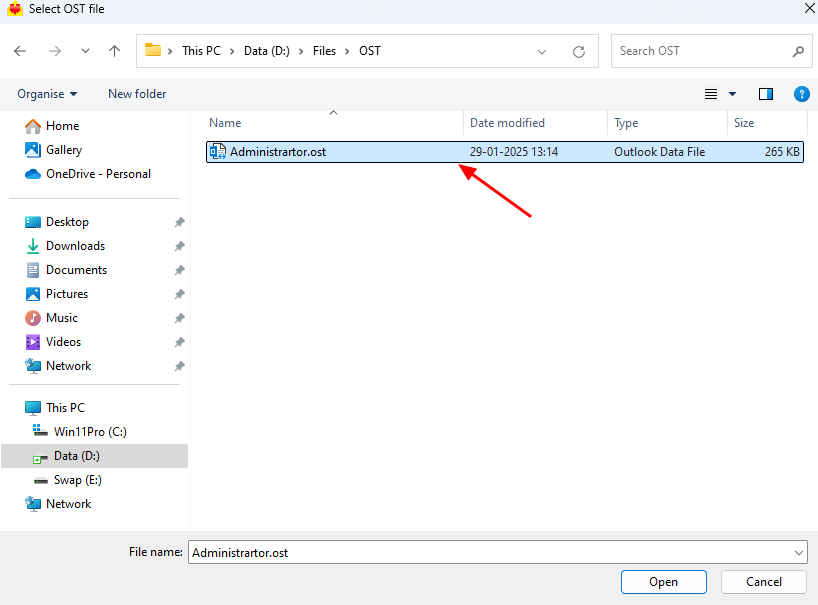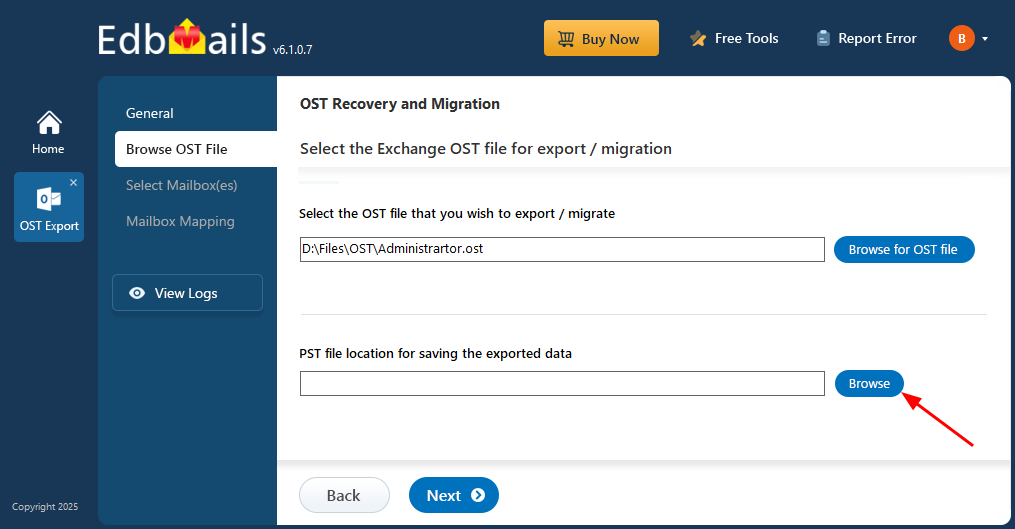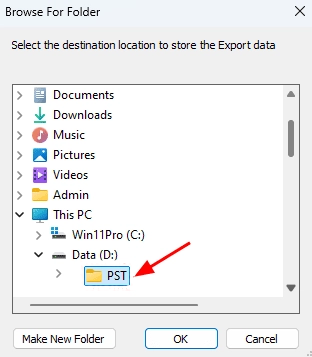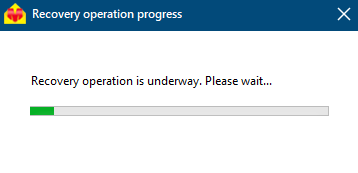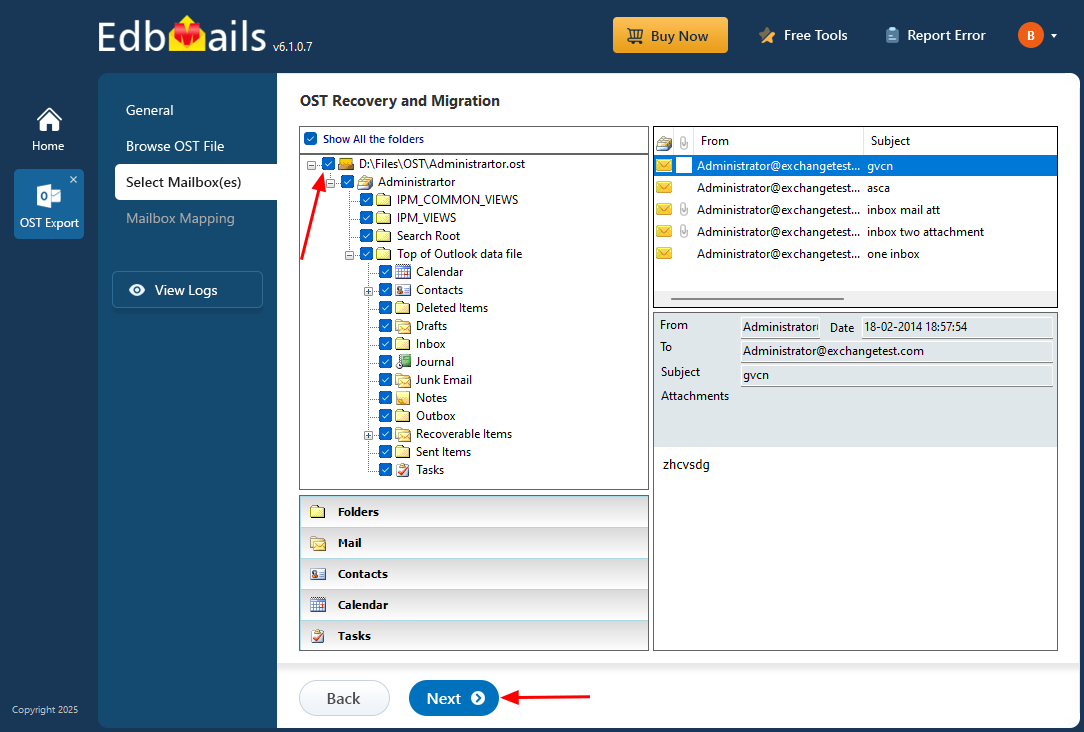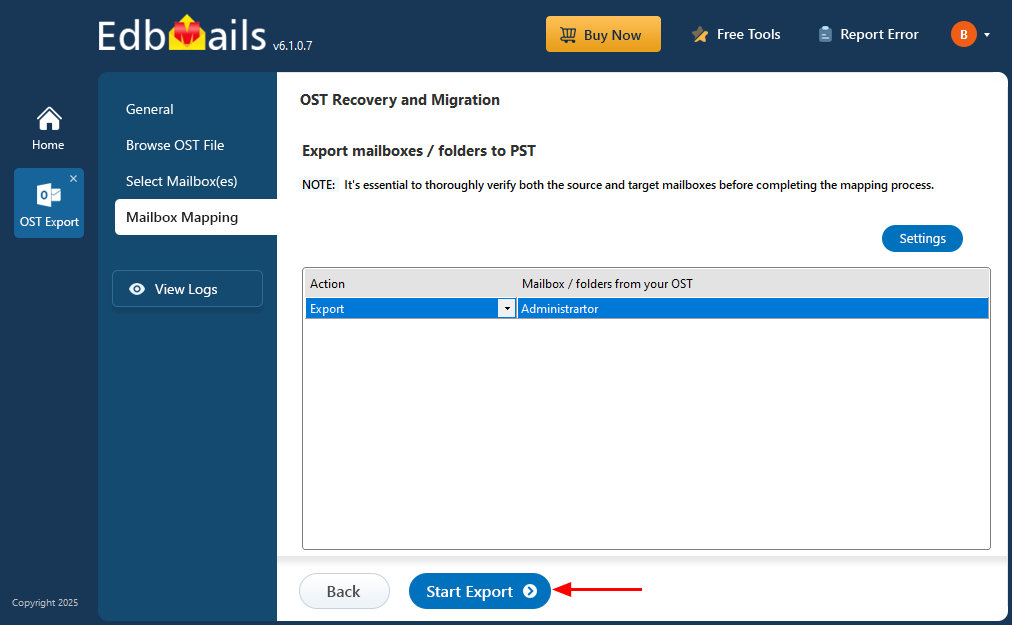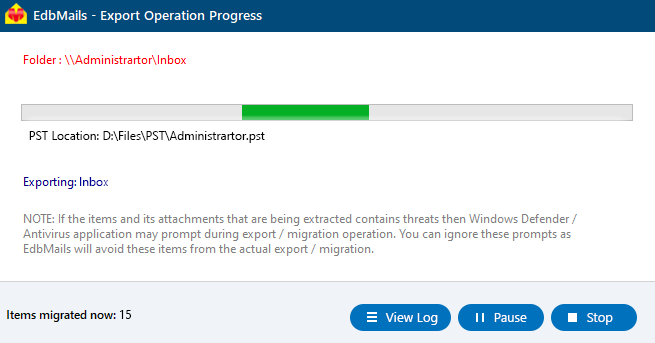Step-by-Step Guide to Resolve the Temporary Mailbox Issue in Exchange
Outlook is a widely used email client by Microsoft, but it’s not uncommon to run into errors while using it. One of the errors that users may encounter is the following one:
Your mailbox has been temporarily moved on Microsoft Exchange server. A temporary mailbox exists, but might not have all of your previous data.
You can connect to the temporary mailbox or work offline with all of your old data. If you choose to work with your old data, you cannot send or receive email messages.
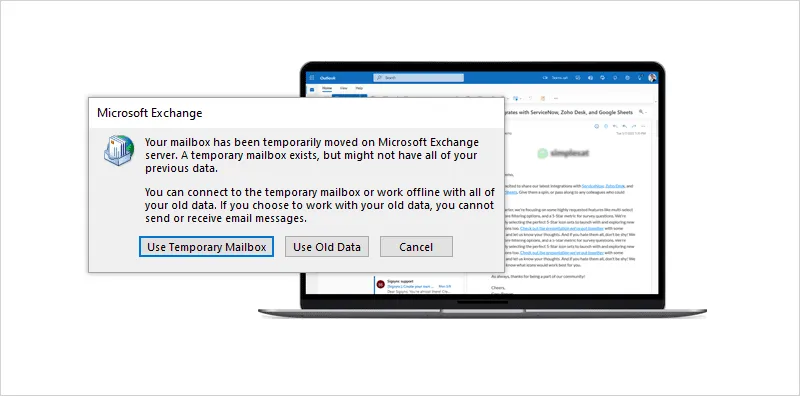
When Outlook fails to connect to the original mailbox, it may attempt to open a temporary one instead. This can result in missing messages, unsynced data, and overall disruption to your workflow. Relying on the temporary mailbox is not advisable, as it may cause confusion and lead to data loss.
The “Your mailbox has been temporarily moved on Exchange server” error typically appears when Outlook is unable to connect to the Exchange server or if the associated Outlook data file is damaged. This issue can stem from server maintenance, updates, profile corruption, or connectivity interruptions. As a result, Outlook may fail to sync with the mailbox and prompt users to connect to a temporary one instead.
To properly resolve the problem, you may need to recreate the Outlook profile or recover data from the original mailbox file. A tool like EdbMails OST to PST converter can be particularly useful in restoring mailbox access when the default methods fail. This step-by-step guide walks you through each solution to help you safely restore your Outlook mailbox and avoid potential data loss.
Common Causes of 'Your Mailbox Has Been Temporarily Moved on Microsoft Exchange Server' Error.
Here are the potential reasons for the "Your mailbox has been temporarily moved on Microsoft Exchange Server" error:
- A corrupted Outlook profile disrupts the connection, requiring a new profile setup.
- A damaged OST file prevents Outlook from syncing properly with the server.
- Incompatible or faulty third-party add-ins can conflict with Outlook's connection.
- Antivirus or anti-malware software may block Outlook's server access, causing the error.
- Exchange server connectivity issues, such as network problems, can trigger this error.
These causes often need troubleshooting to restore Outlook's normal functionality.
How to resolve the issue ‘Mailbox temporarily moved on Exchange server’?
If you encounter the ‘Your mailbox has been temporarily moved on Exchange server’ error, here are some troubleshooting methods and steps to help you fix it.
- Method 1: Remove all Outlook profile except the default one
This method is useful when there are multiple Outlook profiles configured on your computer, and one of the profiles is causing the error. By removing all of the profiles except for the default one, you can isolate the problem and ensure that Outlook uses the correct profile.
Note that when you remove an Outlook profile, all of the data associated with that profile, such as emails, contacts, and calendar items, will be deleted. Therefore, it is important to backup your Outlook data before removing any profiles.
- Step 1: Close Outlook and open Control Panel
- Close Outlook completely to ensure that the changes made to the Outlook profiles are saved properly.
- Click on the Start menu and open the Control Panel. In the Control Panel, click on the option labeled ‘Mail’
- Step 2: Open the Mail settings
- In the Mail settings, click ‘Show Profiles’, which shows all of the Outlook profiles that are currently configured on your computer.
- Step 3: Remove all Outlook profiles except the default one
Select all of the Outlook profiles that are listed, except for the default profile, and click ‘Remove’.
This will remove all of the selected profiles from your computer.
- Step 4: Restart Outlook
- After removing the unwanted profiles, restart Outlook. The next time you start Outlook, it will automatically use the default profile, and the error should be resolved.
- Step 1: Close Outlook and open Control Panel
- Method 2: Create a new Outlook profile
If the Outlook 365 inbox is not updating, creating a new Outlook profile can resolve various issues related to Outlook and Exchange Server. The new profile will have fresh settings, and you can configure it to work with your email service. Follow these steps to create a new Outlook profile.
- Step 1: Close Outlook and open Control Panel
- Before creating a new Outlook profile, close the application to ensure that there are no conflicts with the current profile.
- Click the Windows Start menu, type ‘Control Panel’ in the search box, and then click on the Control Panel application.
- Step 2: Open the Mail applet
- In the Control Panel, locate the Mail applet (Microsoft Outlook) and click on it.
- If you're unable to find the Mail applet, change the view to large or small icons.
- Step 3: Click on the Show Profiles button
- In the Mail Setup dialog box, click ‘Show Profiles’, which displays a list of all the Outlook profiles currently configured on your computer.
- Step 4: Create and configure the new profile
- Click ‘Add’ to create a new profile. Enter a name for the new profile and click ‘OK’.
- In the Add Account dialog box, select ‘Manual setup or additional server types’ and click ‘Next’.
- Step 5: Choose email service and enter the details
- Select the email service you want to use (such as Microsoft Exchange or IMAP) and click ‘Next’.
- Enter the necessary details for the email service you selected, which may include the server name, username, password, and other settings.
- Contact your email service provider if you're unsure about any of the settings.
- Step 6: Set the new profile as the default
- After verifying that the new profile is working correctly, set it as the default profile.
- To do this, select the new profile from the list of profiles in the Mail applet, and then click ‘Set as Default’.
- Step 7: Remove all other old Outlook profiles
- Go to the Mail applet in the Control Panel and click ‘Show Profiles’
- Select the old profile and click ‘Remove’
- Under Always use this profile select the ‘New Profile’ you just configured..
- Step 1: Close Outlook and open Control Panel
- Method 3: Disable incompatible Outlook Add-ins
Another way to fix the ‘Your mailbox is temporarily moved on Microsoft Exchange’ error is by disabling incompatible Outlook add-ins. These third-party extensions can sometimes conflict with Outlook’s core functions, leading to errors or performance issues, especially when connecting to the Exchange Server.
If you're unsure which add-in is responsible, the best approach is to disable all of them first, then re-enable them one at a time to identify the one causing the issue. Follow the steps below to disable Outlook add-ins safely.
- Step 1: Open Outlook in safe mode
To determine if an add-in is causing the error, start by launching Outlook in Safe Mode. This mode disables all add-ins, allowing you to check if Outlook runs without issues. If the error doesn’t appear in Safe Mode, it’s likely that one of the add-ins is the source of the problem. To open Outlook in Safe Mode, press and hold the Ctrl key while clicking the Outlook shortcut. When prompted, confirm that you want to start in Safe Mode.
- Step 2: Identify the add-in causing the error
- Once you've opened Outlook in safe mode, navigate to the ‘File’ menu, click on ‘Options’, and select ‘Add-ins’.
- Under Manage select COM Add-ins and click ‘Go’. You'll see a list of all the add-ins installed in your Outlook.
- Look for the add-ins that are enabled as these add-ins may be causing the error.
- Step 3: Disable the add-ins and restart Outlook
- Select the add-in that you think is causing the error.
- Uncheck the box next to the add-in and click ‘OK’ to disable it.
- Repeat this step for all the suspected add-ins.
Once you've disabled the add-ins, close Outlook and reopen it normally. Check if the error is resolved. If the error persists, try disabling other add-ins until you find the one that is causing the issue.
- Step 4: Remove the incompatible add-in
- If you've identified the add-in that's causing the error, consider removing it.
- Go to the Add-in window in Outlook by following the preceding steps.
- Select the add-in, click ‘Remove’ and finally, restart Outlook.
- Step 1: Open Outlook in safe mode
- Method 4: Enable Cached Exchange mode
Enabling Cached Exchange mode in Outlook 365 is another solution to resolve the error ‘Mailbox moved on the Exchange server’. Cached Exchange mode enables Outlook to store a copy of your mailbox on your local computer, which can improve performance and email fetching time from the Exchange server. If Cached Exchange mode is already enabled and the error persists, try disabling it and then re-enabling it. If the error still persists, try other solutions such as resetting your Exchange Server settings.
Follow these steps to enable Cached Exchange mode in Outlook:
- Step 1: Open Outlook and go to Account Settings
- Open Outlook and navigate to the ‘File’ menu.
- In the Account Information section, click ‘Account Settings’ and select ‘Account Settings’ again from the drop-down menu.
- Step 2: Select the email account
- In the Account Settings dialog box, select the email account and click on ‘Change’.
- Step 3: Enable Cached Exchange Mode
- In the Change Account dialog box, under ‘Offline Settings,’ check the box next to ‘Use Cached Exchange Mode’.
- If the option is already checked, uncheck it, click ‘OK’ to close the dialog box, and then repeat the steps to check the box again.
- Click ‘More Settings’ > ‘Advanced’ and check if the Cached Exchange mode is enabled here.
- Select ‘Download shared folders’ and ‘Download Public Folder Favorites’ and click ‘OK’
- Step 4: Adjust the mailbox size limit and restart Outlook
- If you have a large mailbox, you may need to adjust the mailbox size limit to ensure that Cached Exchange mode works correctly.
- In the Change Account dialog box, adjust the mailbox size limit as needed.
- After enabling Cached Exchange mode, close and restart Outlook.
Keep in mind that enabling Cached Exchange Mode will increase the size of your local mailbox file, so it’s important to ensure you have sufficient disk space available. Additionally, if you're working with a slow or unstable internet connection, Cached Exchange Mode may not function optimally and could lead to performance delays or connectivity issues.
- Step 1: Open Outlook and go to Account Settings
- Method 5: Rename the Outlook data folder
Renaming the Outlook data folder is another method that can help fix the “Your mailbox has been temporarily moved on Exchange server” error. If Outlook is unable to open the existing OST file due to corruption or other issues, renaming the data folder prompts Outlook to generate a new, clean data file for your account. This process is similar to what happens when you create a new profile, Outlook automatically builds a fresh data file which can often resolve file-related errors and restore normal mailbox access.
The following steps describe how to rename the Outlook data folder:
- Step 1: Close Outlook and find the Outlook data folder
Close Outlook and make sure it is not running in the background. The location of the Outlook data folder depends on the version of Outlook you are using and the operating system you are running. You can use the following steps to find the location of the data folder:
- Click on the Start button and search for ‘Control Panel’
- In the Control Panel, select ‘Mail’
- In the Mail Setup dialog box, click on ‘Data Files’
- You will see a list of data files associated with your Outlook account.
- Select the one you want to change and click on ‘Open File Location’, which opens the folder containing your Outlook data files.
- Step 2: Rename the Outlook data file and folder
- In the folder containing your Outlook data files, right-click on the data file that's associated with the email account causing the error and click ‘Rename’.
- Add ‘.old’ to the end of the file name to rename the file.
- Step 3: Create a new Outlook profile and restart Outlook
After renaming the data folder, you will need to create a new Outlook profile.
- Open the Control Panel, select ‘Mail’, and click on ‘Add’ to create a new profile, as explained in Method 2.
- Follow the prompts to create the new profile, and make sure you set it as the default profile.
- Open Outlook and configure your email account using the new profile. Outlook will create a new data file for your account, which should resolve the error.
Note that when you rename the data folder, you may lose any customizations or settings associated with the account, such as rules or signatures. You may need to recreate these settings in the new profile.
- Step 1: Close Outlook and find the Outlook data folder
- Method 6: Repair and convert the OST to PST with EdbMails
Repairing and converting the OST file to PST format with EdbMails is the best method to restore all of your mailbox data from corrupted and orphaned OST files. After exporting mailbox items to PST format, you can import the PST file into Outlook and resynchronize your email account with the mail server. With EdbMails, you can open an OST file and can also migrate OST to Office 365.
Here’s how you can repair and convert the OST to PST file format with EdbMails:
Step 1: Install EdbMails OST repair and converter tool
- Download and install the EdbMails application on any Windows-based computer. It is a professional tool that can repair and convert OST files to PST format.
- Enter your email address and password to log in, or click 'Start Your Free Trial' to explore the features without signing up for an account.
- Select ‘OST Recovery and Migration’ from the main screen.
- Select operation as ‘OST to PST’.
- You can either use the default job name or type in a custom one for easier identification. After that, click ‘Next’ to continue.
Step 2: Browse and select the OST file to repair
- Click ‘Browse for OST file'.
- Browse your computer to locate the OST file you want to repair. After selecting the file, click 'Next' to continue. If the OST file is stored on a shared network drive, make sure it has both read and write permissions enabled to ensure smooth access and successful conversion.
- Click ‘Browse’.
- Specify the location to save the exported PST files, and ensure the drive has enough free space to complete the export.
- If the Outlook OST file is corrupted, EdbMails automatically scans and repairs any errors in the OST.
- EdbMails allows you to open an OST file and view a complete preview of your mailbox, including emails, folders, contacts, tasks, notes, and calendar entries. You can preview individual items and export selected Outlook data directly to your hard drive.
Step 3: Preview and select the mailbox
- After the repair process is complete, you can preview the contents of the OST file such as emails, contacts, notes, calendars, tasks, appointments, with EdbMails OST reader. And then click the ‘Next’ button to proceed.
Step 4: Export the mail items from Outlook OST to PST.
- Review the selected mailboxes and folders for the export operation. Ensure that the ‘Action’ is set to ‘Export’, then click the ‘Start Export’ button to begin.
- The software starts the conversion process and exports all of your mail data depending on the size of the OST file, you can track its progress using the progress bar.
Step 5: Import the PST file into Outlook
- After the OST file has been converted to PST format, you can import the PST file into Outlook.
- To import the PST file, open Outlook and select the ‘Import and Export’ option from the ‘File’ menu.
- Follow the prompts to import the PST file into Outlook.
EdbMails can repair and rebuild the OST file from corrupted, damaged> and virus infected OST files> without making any changes to the original source data. The output PST file that you get after the export operation is an exact replica of the source OST file. As a result, it is the best method to recover mailbox items from Outlook errors without data loss.


